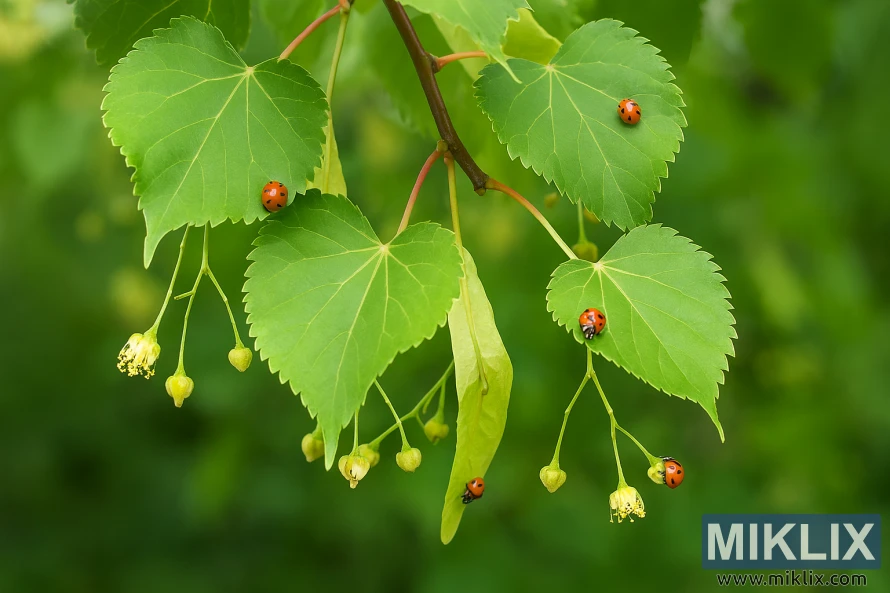Image: Natural Pest Management in a Linden Tree Garden
Published: October 23, 2025 at 9:36:05 PM UTC
Explore a vibrant garden scene featuring Linden trees protected by natural pest management with companion plants and beneficial insects.
A vibrant, high-resolution landscape image captures a thriving garden ecosystem centered around several mature Linden trees (Tilia spp.), renowned for their ornamental beauty and ecological value. The trees stand tall with symmetrical crowns, their branches adorned with lush, heart-shaped leaves in varying shades of green. The foliage is dense and healthy, with no visible signs of pest damage—an indication of successful natural pest management.
The leaves exhibit fine serration along the edges and prominent venation, catching the dappled sunlight filtering through the canopy. Clusters of pale yellow flowers dangle from slender pedicels, adding a soft, fragrant touch to the scene. These blossoms attract beneficial insects, which play a vital role in maintaining the garden’s health.
Ladybugs (Coccinellidae) are scattered across the leaves and stems, their bright red elytra marked with black spots. They are actively feeding on aphids, which are subtly visible in small colonies near leaf nodes. Lacewings (Chrysopidae), with their delicate green wings and golden eyes, hover nearby or rest on the foliage, poised to consume soft-bodied pests. These insects are not only functional but add dynamic movement and visual interest to the composition.
Surrounding the Linden trees are companion plants strategically chosen for their pest-repelling properties. Marigolds (Tagetes spp.) bloom in vivid orange and yellow hues, their pungent scent deterring nematodes and whiteflies. Garlic plants (Allium sativum) grow in neat rows, their tall, slender stalks and papery bulbs contributing both culinary and ecological benefits. These companions form a natural barrier, enhancing the resilience of the Linden trees without the need for synthetic pesticides.
The garden floor is a mosaic of mulch, leaf litter, and low-growing ground cover, supporting soil health and moisture retention. In the background, a soft-focus blend of additional flowering plants and shrubs creates a layered, biodiverse setting. The lighting is warm and natural, suggesting late morning or early afternoon, with sunbeams filtering through the canopy and casting gentle shadows.
This image exemplifies the principles of ecological gardening—where biodiversity, strategic planting, and beneficial insect populations converge to protect and nurture ornamental trees like Linden. It’s a celebration of harmony between aesthetics and sustainability, showcasing how thoughtful garden design can foster both beauty and resilience.
The image is related to: The Best Linden Tree Varieties to Plant in Your Garden

